
Q: I just discovered this interesting tribal mask. Do you know what it is? Let’s reverse roles and ask you for your opinion. Hints: the mask is carved wood and very old. Once there are a few comments I’ll tell you the whole story about this important piece.
A: Write as much as you want in the space below. I’ll post the answer on Sunday. Don’t be afraid to make a wild guess.
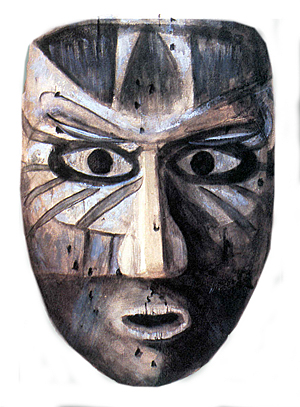

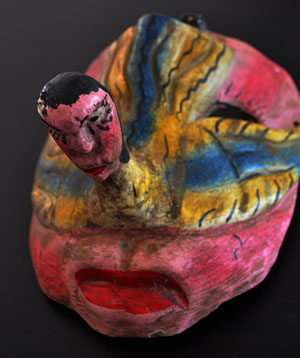
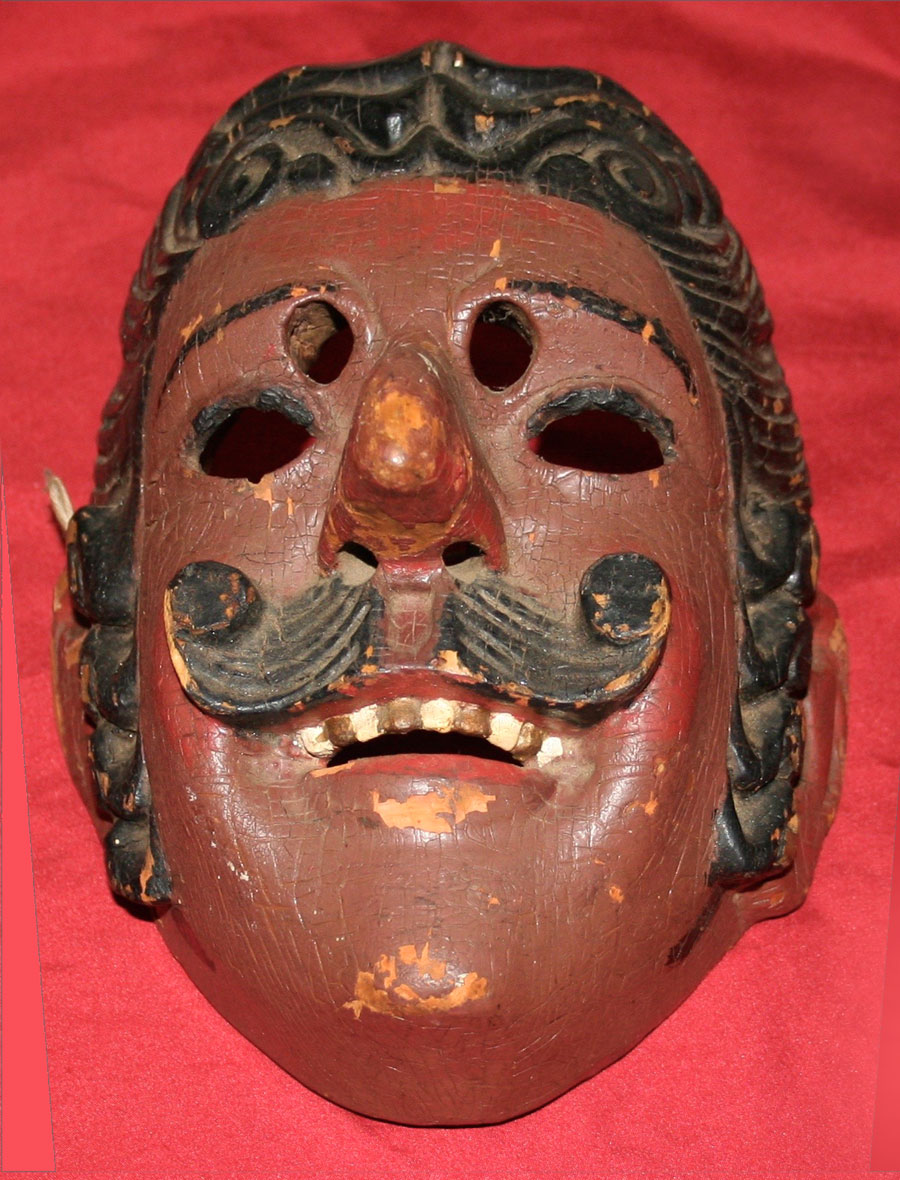
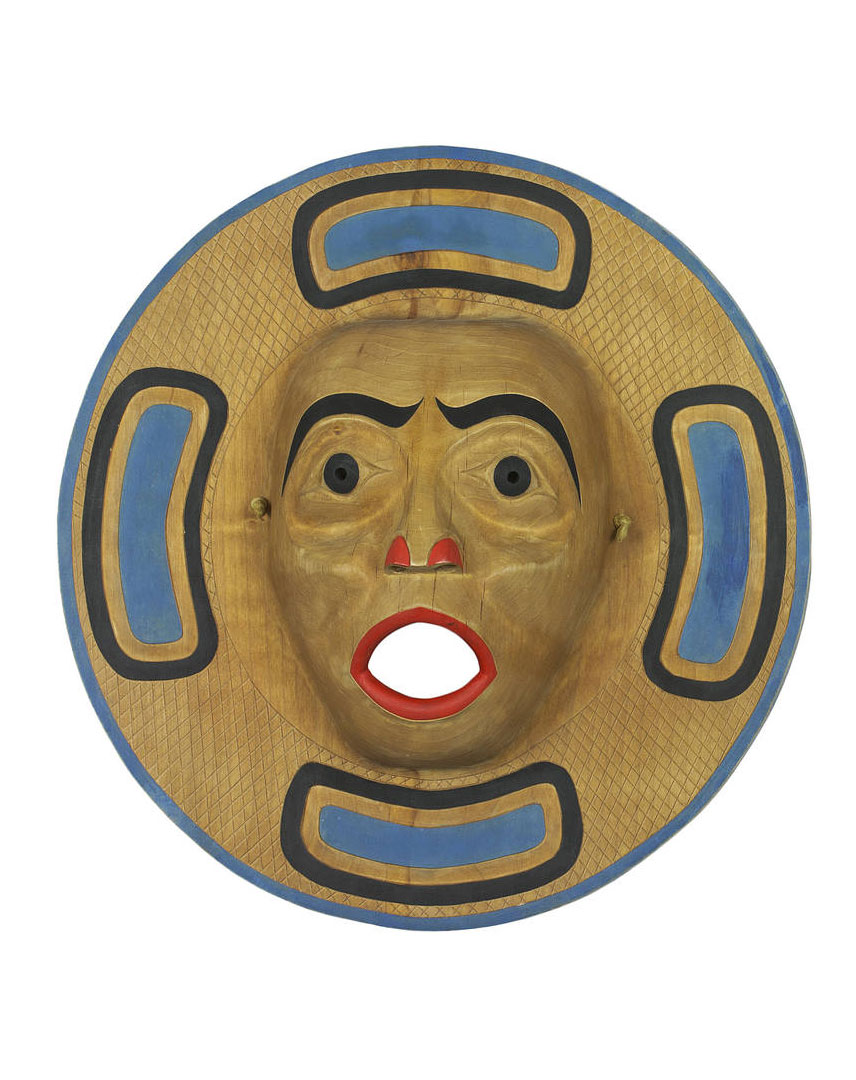
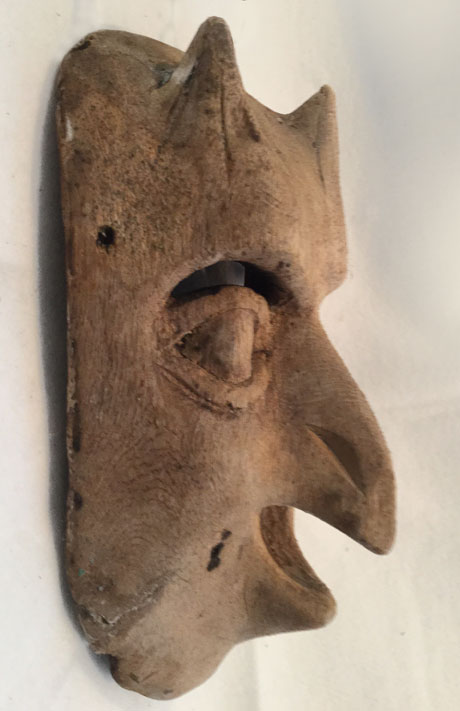
3 Comments
Charles LeBuff
This is an image of a painting rendered by the staff artist who accompanied the 1895 Cushing expedition to Marco Island in Southwest Florida. This mask and others were uncovered during the resultant “dig.” It is of Calusa origins, carved by an artisan of that now extinct people and the artifacts that were uncovered are considered to date pre-contact (pre-Columbian). Most of the wooden artifacts, including the masks and weapons, rapidly disintegrated when removed from the anaerobic muck and exposed to the air. We are fortunate an artist was present to document features and colors that adorned the masks. One wooden artifact from the Cushing collection remains well-preserved and intact. This is the famed “Key Marco Cat,” a small half cat, half human statuette that today is part of the Smithsonian collection.
Bob Ibold
Charles… Thank you for the information. The Calusa Indians were probably inhabiting San Marco, a large island just below Naples, from 100 AD til the 1700s, so this beautiful mask could be very old indeed.
I hope more of our readers will comment. Perhaps someone could compare the art of the lost Calusa culture to that of others we are more familiar with.
Bob Ibold
I just learned that one of the masks was directly radiocarbon dated A.D. 650-750. Several other artifacts from that Marco Island 1896 dig were in this same general time range. That might make them the oldest carved wood masks from North America.